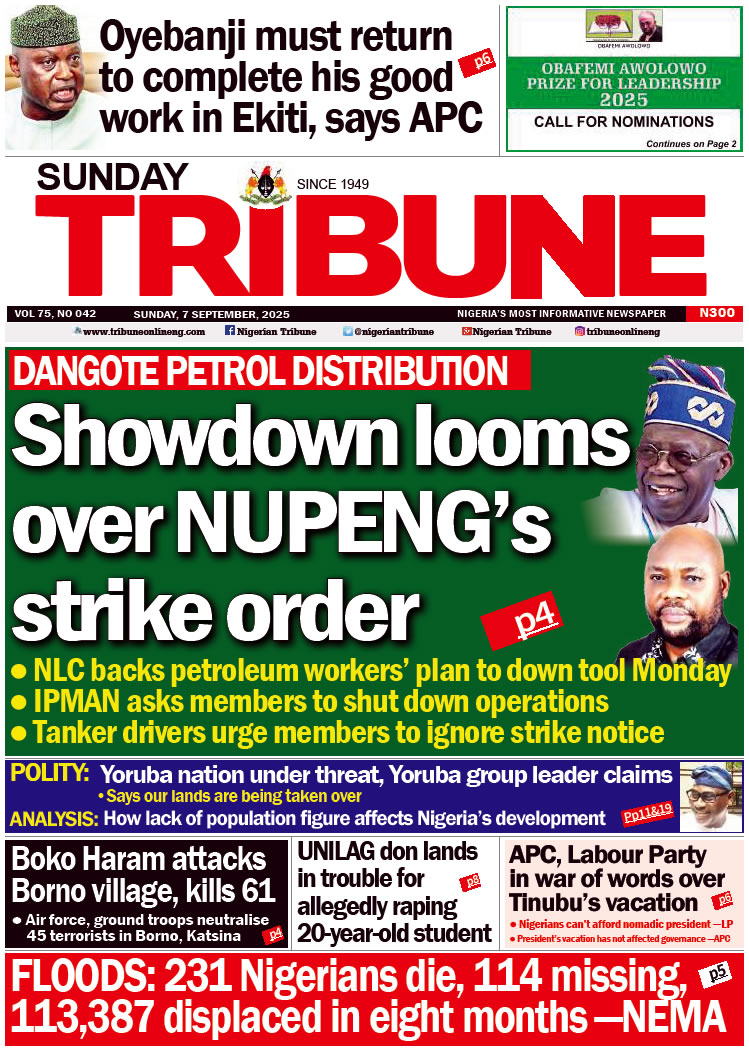LET me start this write-up with a fundamental question. How does the leader of a business organisation correctly determine the satisfaction level of an employee?
Experts say that an employee must be high on the satisfaction curve for leaders to know whether he is “engaged” in the workplace. Engagement is a critical driver of productivity and profitability.
To be “engaged”, the employee must be thrilled and passionate about his role. His job must be a top priority in his life. He must be enjoying it and at the same time, delivering excellent results.
Disengagement leads to an unhealthy attrition in the workplace. There is gradual reduction in commitment to work and therefore, realization of organizational. An engaged employee is productive, innovative, loyal, performs better and does not suffer burnout.
How do we therefore measure employee engagement, translate assessments and utilize them? There are different ways. A useful tool is the annual or quarterly surveys. “Ratings” on the website. Compiled feedbacks from team leaders and workers. Also, anonymous scores on questionnaire and websites.
Who are the ideal regulators of employee engagement? Bosses and leaders with variance on engagement through their behaviours. The bottom-up and top town model of leadership. Engagement scores from regular employee engagement survey. Team leaders who are the problem solvers and workers who understand and are convinced about what aspects of the workforce machine they need to regularly adapt.
Also. we can have regular reviews, surveys and responses. The feedback loop and of course, dwindling productivity.
Organisations must come up with solutions to a new trend that is fast becoming a challenge. The “employee pollination”.
Skilled employees are using the platforms of present employments to shop for new emoluments and other perks. There is nothing wrong with this on the face level because leaders should in no way, stop employees for moving up their career ladder. Some are also leaving because of non-consummation of career goals.
When there is employee satisfaction, people will be happy with their jobs, employee retention will be a given. No doubt, employees must be motivated and engaged in order to drive high performance and great profitability.
When skilled employees suddenly resign from their jobs, they take with them invaluable and precious institutional knowledge. Huge money and time invested in them on formal and informal training will be lost. Negative emotional energy will cascade throughout the workplace and the result will be attrition of organizational health. A healthy workplace will enable all hands to be on deck.
Leaders must achieve the critically needed “fit” in the workplace. What are the engagement drivers? First, there must be a carefully worked out connection between workplace expectations and employees’ goals and values. A fit between individual employee’s aspirations and organisation’s purpose and goals. Is there a value alignment between day-to-day work and organisation’s values and purpose? The answer to this question should have been methodically determined and worked on at the employee’s interview-for-employment stage. Clarity on organization’s goals and purpose should also have been fully achieved at new employee’s orientation seminars and workshops.
Full engagement requires intrinsic motivation. JOB ROTATION Programme can also be introduced to challenge employees and spark special attention and interest; even promotion or career advancement. Getting employees involved in new and exciting projects will also boost confidence and engender interest. There must also be individual employee-directed formal and informal regular engagements and mentorship.
Team efforts must align with values and performance. Enterprise architectural framework must continually give a fillip to value addition. Dynamics of behavioural patterns must be regularly monitored and managed. We must watch out for ripples of pushbacks and negative signals. The organisation must regularly adjust itself to function optimally. We must quickly checkmate slowdowns in value delivery. Collaboration and Synthesis must be an everyday affair.
Organisations require coach-leaders who are experienced and fully at home with insights on interactions and valuable feedbacks. Team members must be encouraged to express themselves always. We must coach with value-adding conversations and promote psychological safety. Let us practice immersive listening and encourage employees (managers, leaders and associates) to share out-of-the-box ideas and details.
Leaders must be adaptable, innovative and deeply committed to excellence that challenges colleagues. Apart from strategy execution, the leader must also encourage and grow abilities. There must be flexibility and broadening of reciprocal relationships.
In conclusion, let me recommend two prescriptive approaches. The diagnostic approach or “Balcony” and Interpretative approach or “Dance Floor”. When the leader “sits” on the balcony, he sees and deciphers what is going on as well as who is interacting or not. On the “dance floor”, the leader witnesses things (including interactions) and appropriately get involved.
The leader must bear in mind the following: there must be dynamic exchanges in the workplace to promote the stakeholder’s feeling or sense of belonging. Teach and at the same time effectively communicate to greatly impact organizational health. He encourages and mentor discouraged and laid-back colleagues and adopts the Consequential Thinking Model. All hands must dutifully be on deck for the journey between options, actions and valuable outcomes.
READ ALSO: Leadership as key factor in internal security
WATCH TOP VIDEOS FROM NIGERIAN TRIBUNE TV
- Let’s Talk About SELF-AWARENESS
- Is Your Confidence Mistaken for Pride? Let’s talk about it
- Is Etiquette About Perfection…Or Just Not Being Rude?
- Top Psychologist Reveal 3 Signs You’re Struggling With Imposter Syndrome
- Do You Pick Up Work-Related Calls at Midnight or Never? Let’s Talk About Boundaries






